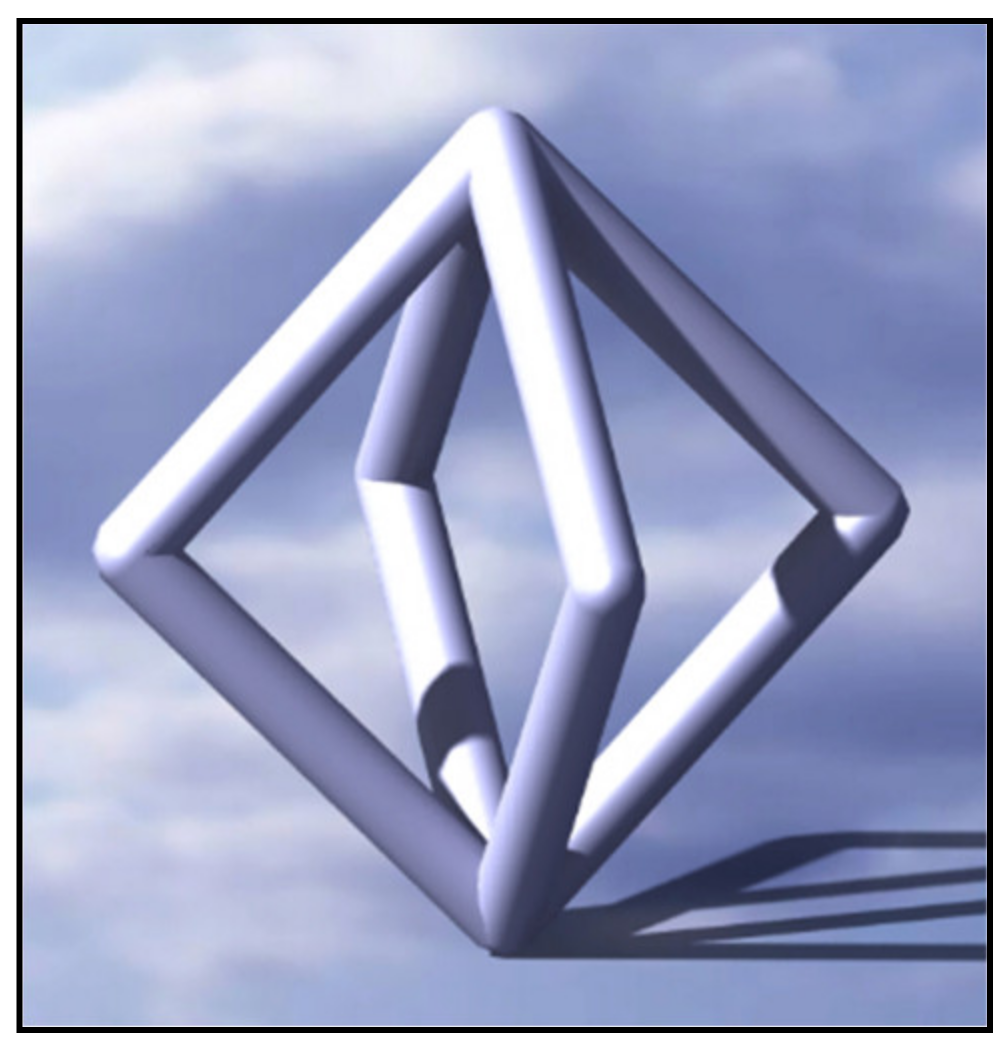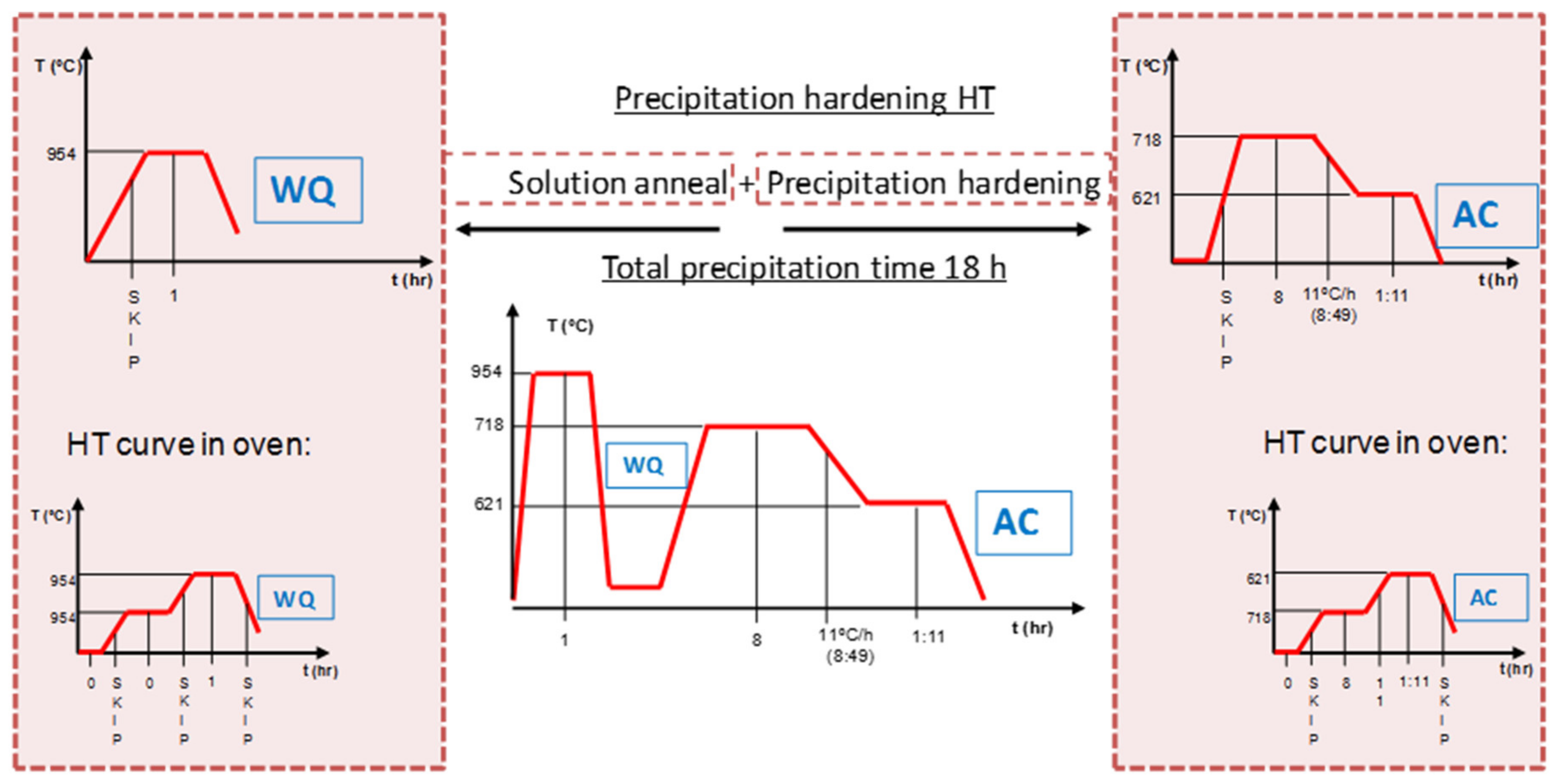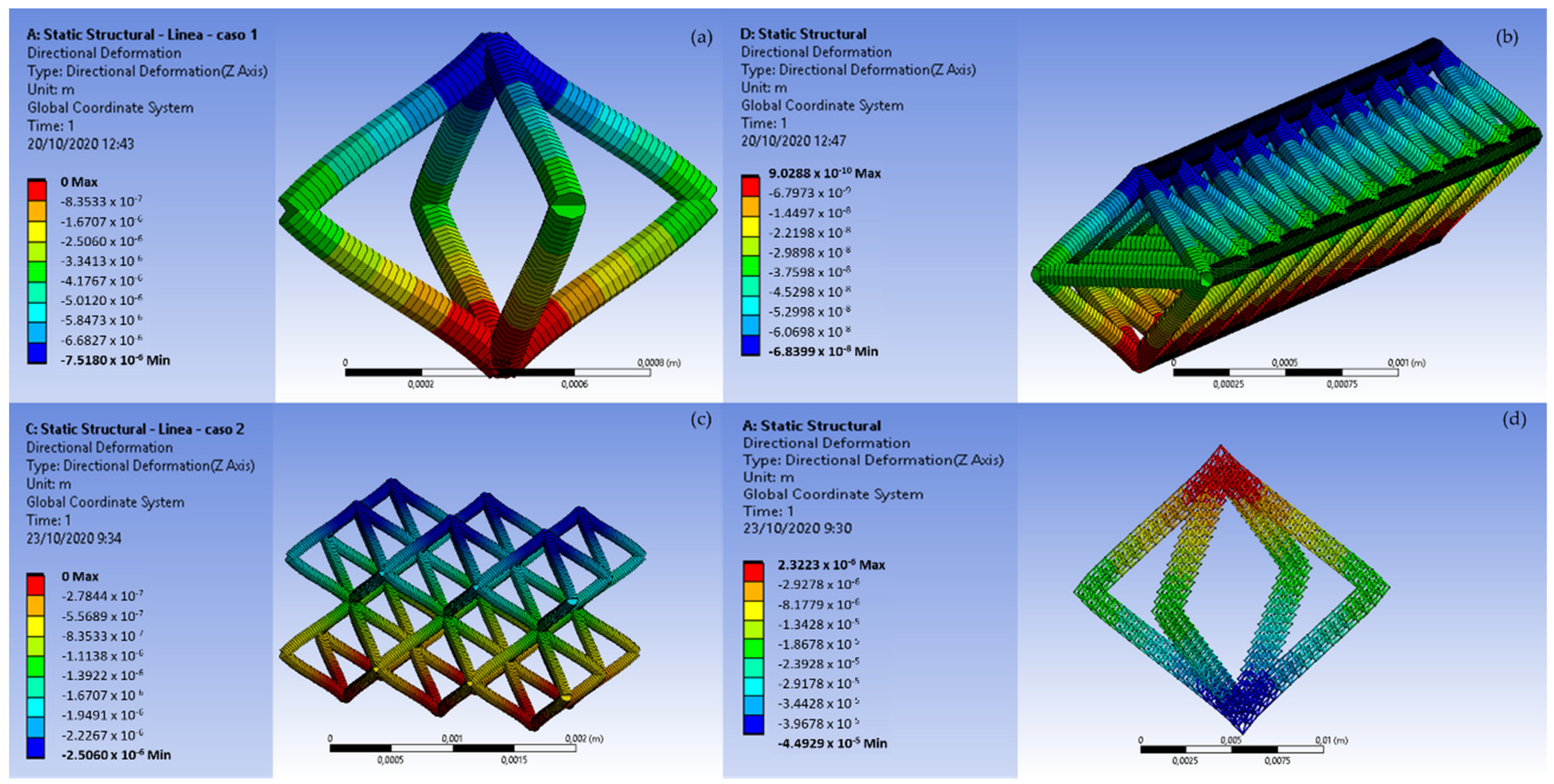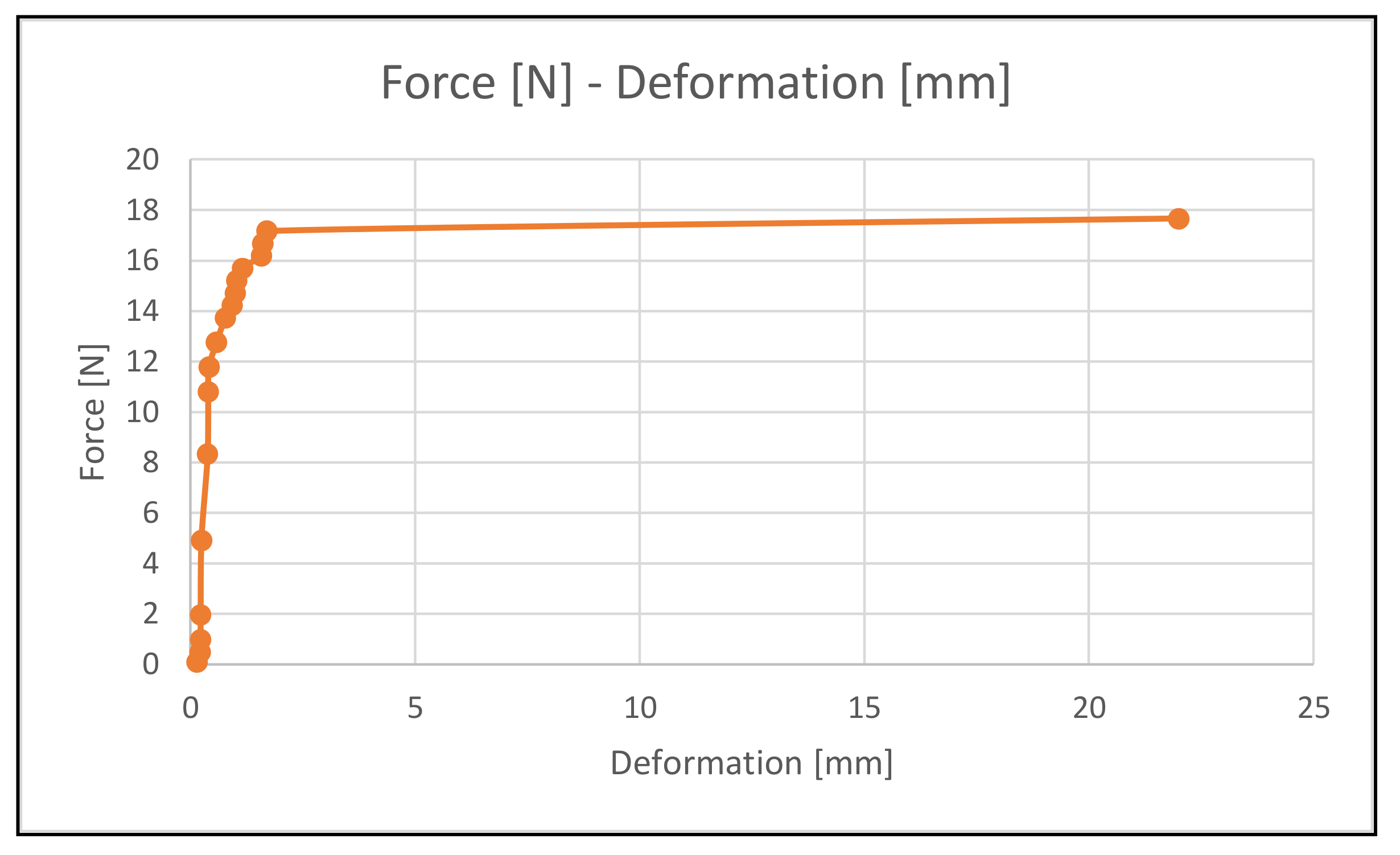A New Approach in the Design of Microstructured Ultralight Components to Achieve Maximum Functional Performance
Abstract
:1. Introduction
2. Design of Replicative Structures
3. L-PBF Process Parameters
- Laser size diffraction test—ASTM B822:
- -
- Dv (10) = 26 µm; 10% of powder volume has a diameter of less than 26 µm.
- -
- Dv (50) = 37 µm; the center of the volume distribution in volume is 37 µm.
- -
- There is no dust below 15 µm in volume.
- Sieve analysis test—ASTM B214:
- -
- No dust above 45 µm by weight.
4. Microstructures Performance Results
4.1. Performance under Compressive Loads
- Stiffness/Weight = (F/δ)/W. This can be calculated from FEM and experimentally, considering elastic behavior of the structures.
- Maximum load before collapsing/weight: Fmax/W. This was calculated experimentally, being the final criteria when structures are on the verge of being crushed under load.
4.2. Experimental Performance
4.3. Design of Complex Pieces: “Fitting Factor” Factor
5. Discussion
6. Conclusions
- A methodology for the design and manufacturing of micro-structured ultralight components to achieve maximum functional performance is stablished.
- Design considerations for microstructures are stated. Component design is based on making replicas of the same structures, using octahedrons cells, from the smallest to the biggest scales.
- Manufacturing process parameters for microstructured ultralight components using Laser Powder Bed Fusion (L-PBF) technology are defined. Specific data for the cases studied are presented, and the boundaries in the print constraints are shown.
- Component behavior regarding compressive loads, and stress and strain distribution performance is analyzed by finite element simulation and experimental validation. Considering geometry and material analysis in the ratios load/weight and Young Module/weight (Section 4.1), it can be said that studied microstructure presents 20,000 times better behavior that the solid microstructure.
- A “fitting factor” in order to consider the difference between the designed part and the manufactured part due to the intrinsic characteristics of the L-PBF manufacturing process is considered. This factor is based on the bar diameter that affects stiffness in the third order, which is a very sensitive parameter. This method presents the correlation of FEM to real printing structures, which is easily done by a factor affecting bar diameter.
Author Contributions
Funding
Institutional Review Board Statement
Informed Consent Statement
Acknowledgments
Conflicts of Interest
References
- NASA Test Printed Parts. Available online: https://www.nasa.gov/centers/marshall/news/news/releases/2017/nasa-tests-first-3-d-printed-rocket-engine-part-made-with-two-different-alloys.html (accessed on 23 March 2021).
- Mugwagwa, L.; Yadroitsev, I.; Matope, S. Effect of Process Parameters on Residual Stresses, Distortions, and Porosity in Selective Laser Melting of Maraging Steel 300. Metals 2019, 9, 1042. [Google Scholar] [CrossRef] [Green Version]
- Martínez, S.; Ortega, N.; Celentano, D.; Sánchez, A.; Ukar, E.; Lamikiz, A. Analysis of the Part Distortions for Inconel 718 SLM: A Case Study on the NIST Test Artifact. Materials 2020, 13, 5087. [Google Scholar] [CrossRef] [PubMed]
- Erdakov, I.; Glebov, L.; Pashkeev, K.; Bykov, V.; Bryk, A.; Lezin, V.; Radionova, L. Effect of the Ti6Al4V alloy track trajectories on mechanical properties in direct metal deposition. Machines 2020, 8, 79. [Google Scholar] [CrossRef]
- Bahl, S.; Mishra, S.; Yazar, K.U.; Kola, I.R.; Chatterjee, K.; Suwas, S. Non-equilibrium microstructure, crystallographic texture and morphological texture synergistically result in unusual mechanical properties of 3D printed 316L stainless steel. Addit. Manuf. 2019, 28, 65–77. [Google Scholar] [CrossRef]
- Wan, H.Y.; Zhou, Z.J.; Li, C.P.; Chen, G.F.; Zhang, G.P. Effect of scanning strategy on grain structure and crystallographic texture of Inconel 718 processed by selective laser melting. J. Mater. Sci. Technol. 2018, 34, 1799–1804. [Google Scholar] [CrossRef]
- Sui, Q.; Li, P.; Wang, K.; Yin, X.; Liu, L.; Zhang, Y.; Zhang, Q.; Wang, S.; Wang, L. Effect of Build Orientation on the Corrosion Behavior and Mechanical Properties of Selective Laser Melted Ti-6Al-4V. Metals 2019, 9, 976. [Google Scholar] [CrossRef] [Green Version]
- Raza, T.; Hurtig, K.; Asala, G.; Andersson, J.; Svensson, L.; Ojo, O.A. Influence of Heat Treatments on Heat Affected Zone Cracking of Gas Tungsten Arc Welded Additive Manufactured Alloy 718. Metals 2019, 9, 881. [Google Scholar] [CrossRef] [Green Version]
- Feng, J.; Fu, J.; Shang, C.; Lin, Z.; Li, B. Porous scaffold design by solid T-splines and triply periodic minimal surfaces. Comput. Methods Appl. Mech. Eng. 2018, 336, 33–352. [Google Scholar] [CrossRef]
- Tang, Y.; Kurtz, A.; Zhao, Y.F. Bidirectional Evolutionary Structural Optimization (BESO) based design method for lattice structure to be fabricated by additive manufacturing. Comput.-Aided Des. 2015, 69, 91–101. [Google Scholar] [CrossRef] [Green Version]
- Nguyen, D.S.; Vignat, F. A method to generate lattice structure for Additive Manufacturing. In Proceedings of the IEEE International Conference on Industrial Engineering and Engineering Management (IEEM), Bali, Indonesia, 4–7 December 2016; pp. 966–970. [Google Scholar]
- Armillotta, A.; Pelzer, R. Modeling of porous structures for rapid prototyping of tissue engineering scaffolds. Int. J. Adv. Manuf. Technol. 2008, 39, 501–511. [Google Scholar] [CrossRef]
- Xiao, F.; Yin, X. Geometry models of porous media based on Voronoi tessellations and their porosity–permeability relations. Comput. Math. Appl. 2016, 72, 328–348. [Google Scholar] [CrossRef]
- Pasko, A.; Fryazinov, O.; Vilbrandt, T.; Fayolle, P.; Adzhiev, V. Procedural function-based modelling of volumetric microstructures. Graph. Models 2011, 73, 165–181. [Google Scholar] [CrossRef] [Green Version]
- Elber, G. Precise Construction of Micro-structures and Porous Geometry via Functional Composition, Mathematical Methods for Curves and Surfaces; Floater, M., Lyche, T., Mazure, M., Mørken, K., Schumaker, L.L., Eds.; Springer International Publishing: Cham, Switzerland, 2017; pp. 108–125. [Google Scholar]
- Massarwi, F.; Elber, G. A B-spline based framework for volumetric object modeling. Comput. Aided Des. 2016, 78, 36–47. [Google Scholar] [CrossRef]
- Ezair, B.; Dikovsky, D.; Elber, G. Fabricating Functionally Graded Material Objects Using Trimmed Trivariate Volumetric Representations. In Proceedings of SMI; University of California: Berkeley, CA, USA, 2017. [Google Scholar]
- Massarwi, F.; Machchhar, J.; Antolin, P.; Elber, G. Hierarchical, random and bifurcation tiling with heterogeneity in micro-structures construction via functional composition. Comput.-Aided Design 2018, 102, 148–159. [Google Scholar] [CrossRef]
- Ghouse, S.; Babu, S.; Van Arkel, R.J.; Nai, K.; Hooper, P.A.; Jeffers, J.R.T. The influence of laser parameters and scanning strategies on the mechanical properties of a stochastic porous material. Mater. Des. 2017, 131, 498–508. [Google Scholar] [CrossRef]
- Ghouse, S.; Babu, S.; Nai, K.; Hooper, P.A.; Jeffers, J.R.T. The influence of laser parameters, scanning strategies and material on the fatigue strength of a stochastic porous structure. Addit. Manuf. 2018, 22, 290–301. [Google Scholar] [CrossRef]
- Hossain, U.; Ghouse, S.; Nai, K.; Jeffers, J.R.T. Controlling and testing anisotropy in additively manufactured stochastic structures. Addit. Manuf. 2021, 39, 101849. [Google Scholar]
- Calleja, A.; Urbikain, G.; González, H.; Cerrillo, I.; Polvorosa, R.; Lamikiz, A. Inconel®718 superalloy machinability evaluation after laser cladding additive manufacturing process. Int. J. Adv. Manuf. Technol. 2018, 97, 2873–2885. [Google Scholar] [CrossRef]














| Ni | Cr | Fe | Cb | Mb | Co | Al | Ti | Si | Mn | C |
|---|---|---|---|---|---|---|---|---|---|---|
| 52.82 | 19.0 | 17.0 | 5.0 | 3.0 | 1.0 | 0.8 | 0.6 | 0.35 | 0.35 | 0.08 |
| Design Parameters | Value |
|---|---|
| Bars length (mm) | 0.7 |
| Bars radius (mm) | 0.01 |
| Number of octahedrons | 9 |
| Laser Power (W) | 150 | 200 | 250 | 300 | 350 | 400 |
| Exposure Time (µs) | 20 | 35 | 50 | 65 | 80 | 95 |
| Process Parameters | Value |
|---|---|
| Laser power (W) | 150 |
| Exposure time (µs) | 55 |
| Properties | Geometry a | Geometry b | Geometry c | Geometry d |
|---|---|---|---|---|
| Volume (mm3) | 4.4 × 10−4 | 5.278 × 10−3 | 7.1 × 10−3 | 4.2 |
| Mass (g) | 3.6 × 10−7 | 4.3 × 10−3 | 5.8 × 10−3 | 3.4 × 10−4 |
| Directional deformation (Z axis) (mm) | −7.51 × 10−3 | −9.02 × 10−7 | −2.5 × 10−3 | −2.32 × 10−3 |
| Minimun combined stress (MPa) | −6.5 × 105 | −9.06 × 103 | −3.75 × 103 | −2.21 × 105 |
| Maximun combined stress (MPa) | 6.09 × 105 | 8.7 × 103 | 1.01 × 105 | 2.05 × 103 |
| Load/Weight | 1.24 × 102 | 2.36 × 10−2 | 1.75 × 10−2 | 1.24 × 102 |
| Relation (Gpa/kg) = Young Module/Weigth | 2.56 × 105 | 4.86 × 101 | 3.61 × 101 | 2.56 × 105 |
Publisher’s Note: MDPI stays neutral with regard to jurisdictional claims in published maps and institutional affiliations. |
© 2021 by the authors. Licensee MDPI, Basel, Switzerland. This article is an open access article distributed under the terms and conditions of the Creative Commons Attribution (CC BY) license (http://creativecommons.org/licenses/by/4.0/).
Share and Cite
Calleja-Ochoa, A.; Gonzalez-Barrio, H.; López de Lacalle, N.; Martínez, S.; Albizuri, J.; Lamikiz, A. A New Approach in the Design of Microstructured Ultralight Components to Achieve Maximum Functional Performance. Materials 2021, 14, 1588. https://doi.org/10.3390/ma14071588
Calleja-Ochoa A, Gonzalez-Barrio H, López de Lacalle N, Martínez S, Albizuri J, Lamikiz A. A New Approach in the Design of Microstructured Ultralight Components to Achieve Maximum Functional Performance. Materials. 2021; 14(7):1588. https://doi.org/10.3390/ma14071588
Chicago/Turabian StyleCalleja-Ochoa, Amaia, Haizea Gonzalez-Barrio, Norberto López de Lacalle, Silvia Martínez, Joseba Albizuri, and Aitzol Lamikiz. 2021. "A New Approach in the Design of Microstructured Ultralight Components to Achieve Maximum Functional Performance" Materials 14, no. 7: 1588. https://doi.org/10.3390/ma14071588







